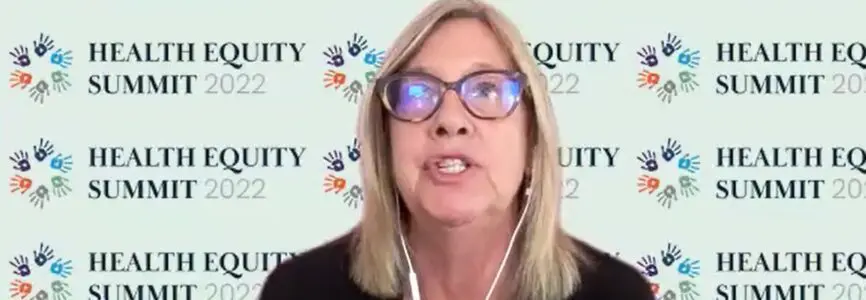Hastings Center News
Prioritize Children and Payments to Improve Health Equity
There is no single policy solution to advancing health equity, but we must prioritize children, said Paula Lantz, a professor of public policy at the University of Michigan, at the health equity summit co-hosted by The Hastings Center earlier this year.
“It’s overwhelming,” said Lantz during a panel discussion at the conference, “Righting the Wrongs: Tackling Health Inequities,” explaining that we must prioritize policies that address “the shameful levels of child poverty in the United States.”
Lantz made these comments in a panel discussion, “The Evidence Base for Health Equity: What We Know Works,” hosted by Emily Cleveland Manchanda, director of social justice education and implementation at the American Medical Association.
She said her first policy priority would be providing high-quality care and education from early childhood through high school.
Lantz said her second policy priority would be naming and framing systemic and structural racism specifically as it affects children.
Amol Navathe, a professor of health at the University of Pennsylvania, then asked attendees to look at how Americans pay for health care. He said that health care payment systems are, in fact, creating a two-tier system. Navathe compared health care payment systems with segregation in schools.
He said that the way health care providers are paid reflects structural racism in the sense that there are two tiers: public programs, particularly Medicaid, which tend to be disproportionately used by racial minorities. Many physician practices don’t accept Medicaid patients because of the program’s relatively low payments.
The other tier is the “privileged group that gets employer-sponsored health insurance,” Navathe said. Those commercial health plans pay more.
He said that as a national health system, we spend 20% of our GDP on health care; however, out of the developed countries in the OECD, we have the worst health outcomes, which shows “it is not working for anyone.”
To improve health outcomes and health equity in the U.S., Navathe argued for value-based payment models. In this approach, instead of a system that rewards the volume of services, a physician or hospital is compensated based on the quality of outcomes that patients achieve. Such a payment system would place more accountability on the doctor and on the hospital.
Navathe concluded his remarks by outlining three core elements in policies that can promote equity. First, the policy should make equity an explicit goal. Second, it should include equity audits, constantly monitoring to ensure equity promotion is actually occurring. Third, it should ensure a comprehensive explanation of how payment reform is impacting disparities in health care or structural racism.
The discussion took place on January 20, the second day of the conference, hosted by The Hastings Center with the AAMC Center for Health Justice and sponsored by the American Medical Association, the American Nurses Association, the American Hospital Association, and the ABIM Foundation, which drew more than 2,500 attendees.

